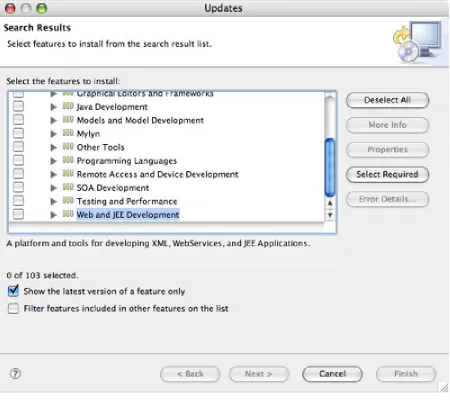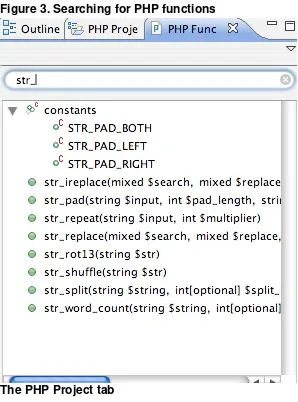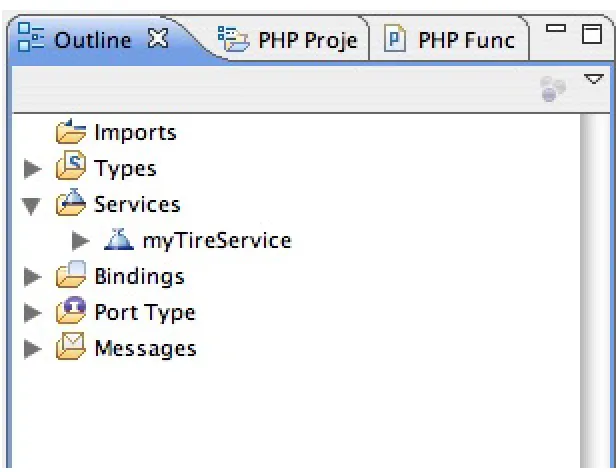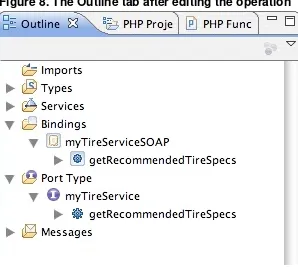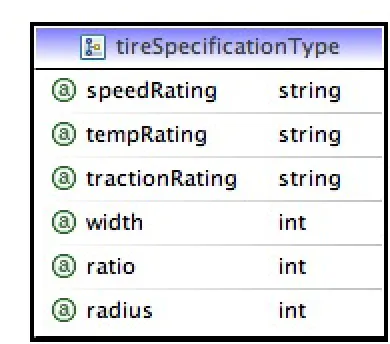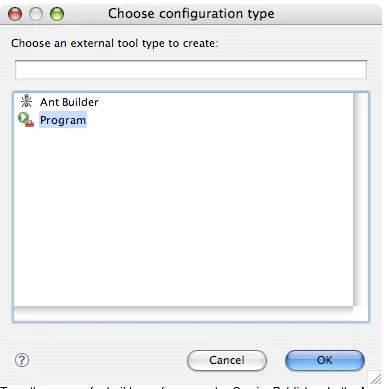Using PHP development tools for contract-first development
Skill Level: Intermediate
Nathan A. Good(mail@nathanagood.com) Senior Information Engineer
Consultant
01 Jul 2008
Learn how to build Web services in PHP using the PHP Development Tools (PDT) plug-in in Eclipse in three easy steps. First, become familiar with the PDT project, and learn how to create and deploy useful PHP projects. Second, learn the
philosophy behind contract-first development. Finally, get an informative overview of the basic parts that make up a Web Services Description Language (WSDL) file.
Section 1. Before you start
About this tutorial
This tutorial shows how to build Web services in PHP using the PHP Development Tools (PDT) plug-in. The PDT project was released in its 1.0 release version in September 2007 and was followed by a V1.0.2 release in January 2008. The PDT project gives you first-class abilities to edit, debug, and deploy PHP applications in the Eclipse IDE.
Objectives
learn about the philosophy behind contract-first development. Third, this tutorial serves as an informative overview of the basic parts that make up a Web Services Description Language (WSDL) file.
Prerequisites
You should have experience with PHP development.
System requirements
To get the most out of this tutorial, you need to install Eclipseand thePDT plug-in. You must also install the EclipseWeb Standard Tools(WST) subproject.
Note:If you installed the Java™ 2 Platform, Enterprise Edition (J2EE) bundle of Eclipse, you already have WST.
To follow the examples, you need Eclipse and one of the operating systems that Eclipse supports — Mac OS X, Microsoft® Windows®, or Linux®. You also need a Java Runtime Environment (JRE) — at least JRE for Java 5 is recommended.
Section 2. PDT overview
The PDT project gives you the ability to do PHP development using the Eclipse IDE. It includes many features of the Java editing environment, including syntax
highlighting, code templating, perspectives, and file and project wizards.
Install PDT
To install PDT, make sure you have the latest version of Eclipse. Use the built-in software updater to update PDT from the update site. PDT requires the WST subproject, so install WST first if you don't already have it. If you downloaded and installed the J2EE bundle of Eclipse, you already have WST. If you downloaded the Java-only bundle of Eclipse, you must install WST from the Eclipse discovery site.
Set up PDT
After installing PDT, there are a couple things you might want to set up, especially if you're using PDT and Eclipse on a computer on which you've already been doing some PHP development. The first configuration is the path to the PHP executable. To set this path, open the Preferences window, and in the left pane, expand PHP, then clickPHP Executables. In the right pane, you'll see where you can type or browse to the path of your PHP executable file.
UnderPHPin the left pane, clickPHP Interpreter, then, specify the version of PHP you're using. The default is PHP V5.
To access the PHP editor, underPHPin the left pane, expand Editor. The PHP editor that comes with PDT includes many features of the Java editor, including syntax highlighting, formatting, code completion, and code templates.
The PHP Functions tab
Figure 3. Searching for PHP functions
The PHP Project tab
ThePHP Projecttab provides a PHP-centric view of your PHP project by listing the contents of your project split into object types. You see any classes you have
defined in your project underClassesand any functions under Functions.
Double-click the item on thePHP Projecttab to automatically navigate to the item in the editor in which it's found. Figure 4 shows an example of thePHP Projecttab with the classes and functions discussed later.
The PHP Explorer
The PHP Explorer shows a list of the projects and files in your workspace. It's consistent with the other project explorers, such as the Java Explorer.
Section 3. Building a service contract
WSDL overview
A WSDL file is an XML file that describes one or more Web services. The
description includes everything from the methods, oroperations, available in the service to the schema for the messages that form the inputs and outputs of the operations.
If you're familiar with WSDL files or already have one that you want to use and don't care how they work, you can safely skip this section and move on to "Alternative: Import a WSDL file." But if you're new to WSDL files or have used them before, but would like a refresher, this section will be very helpful.
explored in greater detail in the rest of this section.
types
This section of the WSDL file covers the types used in the Web service request and response messages.
message
This contains the messages sent to and received from the Web service. In the visual Eclipse editor, they are shown as the input and output of the Web service operation.
portType
This lists the operations the Web service exposes.
binding
This includes the communication protocols the Web service uses.
service
This describes the service or services exposed.
The types element
Thetypeselement can contain information about the types used in the SOAP messages. The types are conveniently described in XML schema, and you can import other types. The Eclipse editor works well with both. One advantage of using external schemas is that you can reuse complex types that have already been defined. In contrast, an advantage of using inline (that is, inside the WSDL) schema is that your WSDL file contains everything that needs to be known about the Web service.
Note:To keep things simple, this tutorial focuses on defining types in inline schema.
The message element
Themessageelement defines the messages sent in and received from the
operations. If you think of a Web service operation as being a method in PHP code, themessageelement describes the parameters sent into the method and the return type that the method returns.
The portType element
TheportType element describes the operations a Web service exposes. If you think of a Web service, again, as a PHP class, theportType element would be explaining the public methods the PHP class exposes.
Thebindingelement explains how the operations are exposed in terms of which protocol is used to access them. In most of the examples you find, the SOAP
protocol is used to access Web service operations. However, other protocols may be used, such as HTTP.
The service element
Theserviceelement describes the Web service, allowing you to group similar operations in a collection of operations that make sense as a service.
Contract-first development
Building or providing a WSDL file first, then writing the code to implement the service according to the WSDL file (contract) is calledcontract-firstdevelopment. Building the contract before worrying about how you're going to implement it has a few advantages.
Open implementation
It leaves you free to implement the service however you see fit. As long as you comply with the contract, it doesn't matter if you build the Web service in the PHP, Java, Groovy, or any other language.
Concurrent development
If you build the contract first, you can give the contract out to your consumers so they can start developing clients to call the services. As long as you comply with the contract you've given to your consumers, you both can build your code concurrently. If you did bottom-up Web service development, in which you build the code first, then expose the contract for the service, other people are waiting for you to finalize your code base.
Proper analysis
Creating the contract first keeps you and your team honest by performing analysis up front because the analysis leads to the content of the contract. If you build the Web service from the bottom up, there's a greater likelihood that your service grows organically, and you could end up with a contract more specific to your implementation than you might intend.
Section 4. Building the WSDL file visually
When you build a WSDL file visually in the Eclipse WSDL visual editor, it feels
natural, given the visual editor layout, to build the WSDL file starting at the service element and working backward, defining the types last. The editor first shows you a UIelement that actually corresponds to theserviceelement in the WSDL file.
Figure 5 shows part of the Web service. Because the example is a Web service that returns the manufacturer's recommended tire sizes given the year, model, and make of an automobile, call the servicemyTireService.You can type the new name
directly into the visual editor.
Figure 5. The Web service in the WSDL file
Listing 1 shows the change Eclipse makes for you in the WSDL source.
Listing 1. The WSDL changes to service
<wsdl:service name="myTireService">
<wsdl:port binding="tns:myTireServiceSOAP" name="myTireService">
<soap:address
location="http://localhost/~nagood/phpws/service.php" /> </wsdl:port>
</wsdl:service>
TheOutlinetab displays the major parts of the WSDL file. As you click the parts on theOutlinetab, they're highlighted in the WSDL visual editor.
Update the name of the default operation
After changing the name of the service, you can update the name of the default operation that was created when Eclipse initially built the skeleton WSDL file. Click
NewOperationand start typing the name of the method. The name of the method in this example isgetRecommendedTireSpecs, as shown in Figure 7. The updated WSDL source is shown in Listing 2.
Figure 7. The operation in the WSDL editor
Listing 2. Updated WSDL source for getRecommendedTireSpecs
<wsdl:portType name="myTireService">
<wsdl:operation name="getRecommendedTireSpecs">
<wsdl:input message="tns:getRecommendedTireSpecsRequest" /> <wsdl:output message="tns:getRecommendedTireSpecsResponse" /> </wsdl:operation>
</wsdl:portType>
Figure 8. The Outline tab after editing the operation
Leave the binding alone for now. It's defined as it should be, and there's no reason to change it. However, in this example, the types of the request and response will be augmented from the default type of strings.
Edit request and response types
On the input line of the WSDL visual editor, click the blue arrow next to the
generated request element namegetRecommendedTireSpecs. The Eclipse visual XML schema editor opens for you automatically, allowing you to edit the complex types for the request and response. The request is shown in Figure 9, with the elements added for the year, make, and model of the automobile.
Figure 9. The getRecommendedTireSpecs request object
3 shows the type after it was made into a global type.
Listing 3. After making the type a global type
<!-- ... parts of the WSDL before ... -->
<xsd:element name="recommendedTireSpecsRequest" type="tns:automobileType"></xsd:element> <xsd:complexType name="automobileType">
<xsd:sequence>
<xsd:element name="year" type="xsd:int"></xsd:element> <xsd:element name="make" type="xsd:string"></xsd:element> <xsd:element name="model" type="xsd:string"></xsd:element> </xsd:sequence>
</xsd:complexType>
Go back to the WSDL editor and click the blue arrow next to the output line. The schema editor opens once again, this time with the element and anonymous type displayed. Because the example service returns one or more sets of tire
specifications, each consisting of the speed rating, traction rating, temperature rating, and dimensions of the tire, the simple string in the return type is not adequate.
Add the data parts as attributes
This time, instead of adding elements to the complex type, add the different data parts as attributes. Remove the element that's there, then add attributes for speedRating,tempRating,tractionRating,width,ratio, andradius.
Figure 10. After adding the attributes
collection oftireSpecificationTypecomplex types.
Figure 11. The tireSpecificationsType
Now change therecommendedTireSpecsResponse to make it of type
tireSpecifcationsType. When you're done, it looks like Figure 12. Now, you have all the types you need to use the Web service. The final WSDL file looks like Listing 4.
Figure 12. The final response
Listing 4. The completed WSDL file
<xsd:attribute name="radius" type="xsd:int"></xsd:attribute>
Section 5. Validating the Web service
Alternative: Import a WSDL file
Validate the Web service in Eclipse
After you're finished with the WSDL file, validate it inside Eclipse to make sure it's a valid WSDL file. ChooseValidatefrom the context menu of the project in PHP Explorer to validate the file with Eclipse. As long as the file is valid, you're ready to start building the PHP Web service.
Section 6. Building the PHP service code
Using SOAP extensions
The SOAP extension in PHP allows you to build SOAP clients and servers in PHP. To build the SOAP client, you use primarily theSoapClientclass in PHP. In addition to theSoapClientclass, there are classes to build SOAP servers (SoapServer) and classes for dealing with SOAP messages (SoapHeader, SoapFault, SoapParam, andSoapVar). For more information about these classes, see the links to the PHP SOAP documentation in Resources.
In V4 of PHP, the SOAP extensions were an optional addition. To use SOAP extensions, you had to either enable the extensions with the --enable-soap option or look for precompiled distributions of PHP that already had the SOAP extension enabled. In PHP V6, the SOAP extension is enabled by default.
SOAP extensions with PHP
If you're unsure whether you have SOAP extensions enabled for your version of PHP, there are a couple ways to tell. The first is to write a quick PHP file containing only<?php phpinfo(); ?>and view it in a browser or execute it from the command line.
Alternatively, you can use the command-line option-m, which shows the compiled-in modules for PHP.
As long as you have SOAP extensions enabled, you can create a SoapServer dynamically, without having to worry about serializing your PHP objects to XML or deserializing them from XML to your PHP classes.
PHP code must include some objects that are mapped to the complex types in the WSDL file by the SOAP extension code.
The supporting classes
In the PHP service code, although you don't have to worry about serializing and deserializing objects to and from XML, you should build classes that correspond to the types in the WSDL file. There are projects written in PHP that help with this a bit, but with only three types in this service, the effort is fairly trivial.
Build the Automobile class
The first class to build in the PHP code is theAutomobileclass. It actually maps to theautomobileType, but thanks to the ability to specify the mapping while
creating the PHPSoapServer, you don't have to make the names of the classes in PHP map to the names of the complex types in the WSDL file. This can make the PHP code look more like PHP code, as it's common to follow Pascal or upper-camel naming conventions for classes in PHP. In contrast, if you've done some surfing on the Web, you'll see many examples in which people keep the names of the PHP classes the same as the complex types in the WSDL file, presumably because it makes it easier to remember what's associated with what.
TheAutomobilePHP class is shown in Listing 5. The fields exposed as elements in the WSDL file are public fields in the class. Note the absence of accessors in the class.
Listing 5. The Automobile PHP class
class Automobile {
The second class is theTireSpecificationclass. In the type definition in the WSDL file, the fields forspeedRating,tempRating, and others are attributes. In the PHP class, they're still defined as public fields, just like in theAutomobileclass in Listing 5.
Listing 6. The TireSpecification class
class TireSpecification {
public $tractionRating; // string public $width; // int
public $ratio; // int public $radius; // int }
Listing 7. The WSDL definition for automobileType
<xsd:complexType name="automobileType">
Finally, theTireSpecificationListclass contains one field, which holds an array ofTireSpecificationobjects. This maps back to the
tireSpecificationsTypein the WSDL file and will be the value returned from the function that handles the Web service.
Listing 8. The TireSpecificationList class
class TireSpecificationList {
public $tireSpecification; // tireSpecificationsType }
The complex types all have corresponding PHP classes, so the code is nearly complete. If you look at thePHP Projecttab, you will see the list of new classes. All that's left in the code is to add a class to be the service and some code to tell the SoapServerhow to handle the WSDL.
Build the service class
The service class is a lightweight class that contains the method mapping to the operation name in the WSDL file. The operation is shown in Listing 9. Note that the names are the same and that the function takes a single parameter, which will be an Automobileobject.
Listing 9. The WSDL operation
encodingStyle="http://schemas.xmlsoap.org/soap/encoding/" />
To keep things simple, I hard-coded a couple of tire specifications for my car, a 1993 Nateauto Speedster (OK — that's a really corny name, but I'd rather be accused of having a poor imagination for marketing than trademark infringement). I made up a rule that if the car is older than 1994, a smaller tire is among the recommend tire sizes.
Add the server code
Finally, the server code is listed at the end of your service.php file. The SoapServeris instantiated with the class map and a couple of options.
Listing 10. The SoapServer code
$server = new SoapServer('myTireService.wsdl',
Table 1 shows the options for creating this code.
Table 1. Options for creating SoapServer
Key name What it does
classmap An associative array that links the complex type names from the WSDL file to the PHP class names
soap_version The version of the SOAP specification that
SoapServersupports
uri The Universal Resource Identifier (URI) used as the namespace for the service (You will see
urn:myTireServicein the WSDL file.)
style The style of WSDL method binding used (In this example,RPC literalis used.)
ThemyTireService class is set so that when thehandle()method handles the post, thegetRecommendedTireSpecs()function is called.
Section 7. Deploying the code
Add a builder for your project
Although the PDT tools allow you run PHP scripts and execute PHP Web pages given a server runtime, neither one helps too much with testing Web services because you need to post a SOAP request to the Web service and be able to see the response. So, the goal is to be able to publish the service.php file and
myTireService.wsdl file to a Web location from which you can call them from a test SOAP client.
You really shouldn't put your workspace under the document root or a folder published by the Web server because of permissions and security. The best alternative is to put a builder into Eclipse that publishes your files to the Web document location of your choice. To add a new builder for your project, click
Propertiesfrom the context menu for your project.
In the left pane, clickBuilders. ClickNewto add a new builder for your project.
In theChoose configuration typewindow, selectProgramfrom the list, then click
OK.
Type the name of a builder — for example,ServicePublisher. In theLocationfield, type the name of a copy command appropriate for your operating system, like /bin/cp.
Beneath theArgumentsfield, clickVariables, then select the variable called
${project_loc} as the base of your project. Remember that you will have to type the names of the actual files in thisArgumentsfield. You can't use wildcards like the asterisk (*) or question mark (?) because these are interpreted by your shell before being sent to the command line. As far as/bin/cpis concerned, there is no file called*or?.
Troubleshooting
Another alternative: REST services
where you make the request by supplying a URL to a server and receive a document as a response. Common technologies, such as Atom or RSS feeds, are REST services.
As an alternative to using SOAP services, you can build Web services in PHP. You can use existing PHP and PEAR objects, such as SimpleXML, XMLReader, and XMLWriter included in PHP V5 (seeResources).
For troubleshooting steps, a good SOAP client that gives you all the SOAP faults helps. If your existing SOAP client swallows errors, consider using a different one. Other useful tools are those like Fiddler (seeResources) or other proxy applications that trap the messages sent to and from the Web service.
When I built the WSDL file for the first time, I wasn't paying attention and created the WSDL usingdocument literal. While this is great practice for creating WSDL files, I had nothing but problems trying to get it to work, even with the PHP SoapServer class set to useSOAP_DOCUMENT andSOAP_LITERAL. The error that I received when the WSDL was set up asdocument literalwas:
Procedure 'getRecommendedTireSpecs' not present.
After changing the WSDL to useRPC encoded, I got the error:
Error cannot find parameter.
I was able to make it go away be ridding theautomobileType of all but one element (the year). I finally changed the WSDL to useRPC literal, which is fully Web Services Interoperability Organization (WS-I)-compliant, as well as allowing me to use the rich, complex types I had set up.
Section 8. Summary
Creating a WSDL file first, then the service, is doing contract-first development. With Eclipse, PDT, and WST, you have the tools you need to create the WSDL visually and easily, then use Eclipse's features to automatically publish your PHP service to a location.
Resources
Learn
• Theonline Eclipse helphas more information about what's new, as well as additional tips and tricks.
• For more information about SOAP, see thePHP SOAP documentation. • "XML for PHP developers" provides a great overview of using XML in PHP. • PHP.netis the central resource for PHP developers.
• Check out the "Recommended PHP reading list." • Browse all thePHP contenton developerWorks.
• Expand your PHP skills by checking out IBM developerWorks'PHP project resources.
• Using a database with PHP? Check out theZend Core for IBM, a seamless, out-of-the-box, easy-to-install PHP development and production environment that supports IBM DB2 V9.
• Check out the "Recommended Eclipse reading list." • Browse all theEclipse contenton developerWorks.
• New to Eclipse? Read the developerWorks article "Get started with Eclipse Platform" to learn its origin and architecture, and how to extend Eclipse with plug-ins.
• Expand your Eclipse skills by checking out IBM developerWorks'Eclipse project resources.
• To listen to interesting interviews and discussions for software developers, check outdeveloperWorks podcasts.
• Stay current with developerWorks'Technical events and webcasts. • Watch and learn about IBM and open source technologies and product
functions with the no-costdeveloperWorks On demand demos.
• Check out upcoming conferences, trade shows, webcasts, and otherEvents
around the world that are of interest to IBM open source developers.
• Visit the developerWorksOpen source zonefor extensive how-to information, tools, and project updates to help you develop with open source technologies and use them with IBM's products.
Get products and technologies
• Download the latest builds for thePDT project.
• The PHP site provides information on and functions forSimpleXML,
XMLReader, andXMLWriter.
• Fiddleris the HTTP debugging proxy that works with most Internet browsers. • Check out the latestEclipse technology downloadsat IBMalphaWorks. • DownloadEclipse Platform and other projectsfrom the Eclipse Foundation. • DownloadIBM product evaluation versions, and get your hands on application
development tools and middleware products from DB2®, Lotus®, Rational®, Tivoli®, and WebSphere®.
• Innovate your next open source development project withIBM trial software, available for download or on DVD.
Discuss
• TheEclipse Platform newsgroupsshould be your first stop to discuss questions regarding Eclipse. (Selecting this will launch your default Usenet news reader application and open eclipse.platform.)
• TheEclipse newsgroupshas many resources for people interested in using and extending Eclipse.
• Participate indeveloperWorks blogsand get involved in the developerWorks community.
About the author
Nathan A. Good
